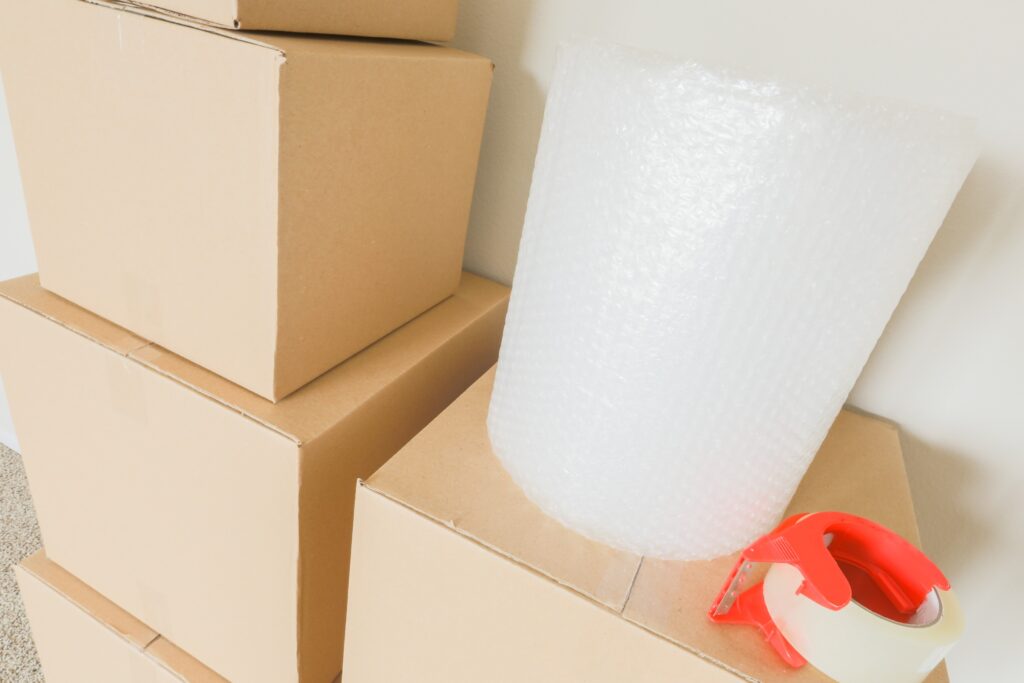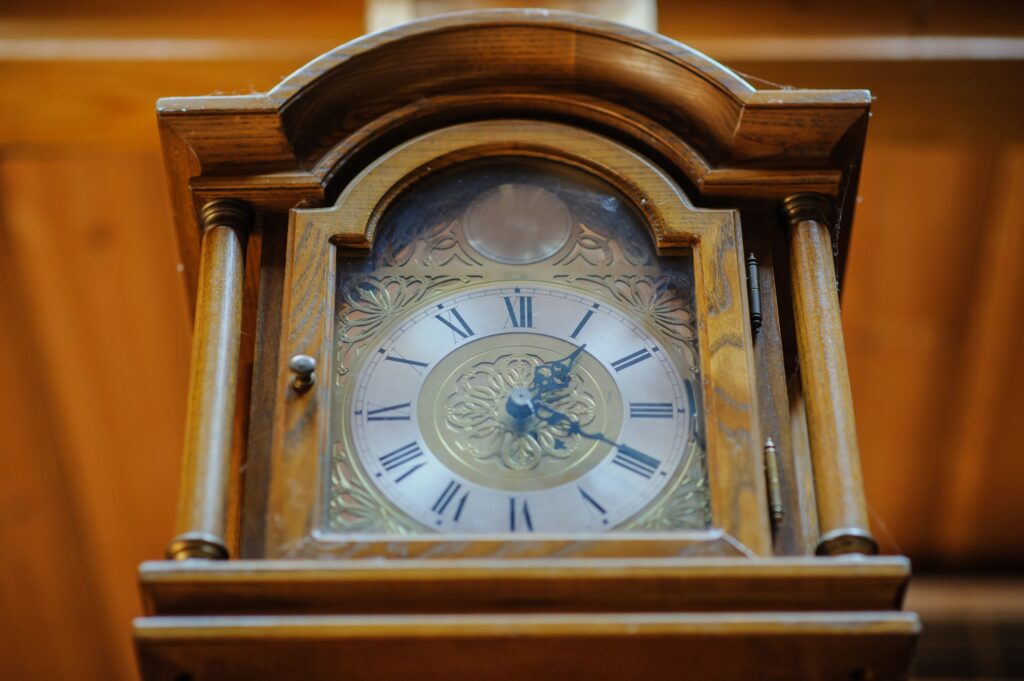How to Pack a Grandfather Clock by Yourself

Moving a grandfather clock is no small feat. These intricate, heavy, and often antique pieces, including antique clocks, require special care to ensure their safety during transport. Whether your clock has been passed down through generations or you recently acquired it, its delicate mechanics, fragile exterior, and sentimental value demand extra attention. While moving such a piece on your own can save on costs, it’s essential to approach it with the right tools, knowledge, and patience. In this guide, we’ll cover every aspect of packing and moving your grandfather clock by yourself—step by step—so you can do it safely and effectively.
A Step-by-Step Guide on Packing a Grandfather Clock
Handling a grandfather clock during a move requires precision and care to protect its fragile parts. To ensure its safety, you need the right approach and a clear understanding of each phase of the packing process, especially when you move a grandfather clock. This step-by-step guide provides all the necessary details, from gathering materials to properly disassembling and reassembling the clock. Following this systematic approach, you can safeguard your clock during transport and ensure it remains in perfect working order for years.
Step 1: Understand the Risks and Challenges
Moving a grandfather clock can be a daunting task due to its fragility and delicate mechanisms. It’s essential to understand the risks and challenges involved in transporting such a valuable and sensitive item. Grandfather clocks are often family heirlooms or antiques that require extra care while moving. The clock’s intricate mechanisms, glass panels, and pendulum rod can be easily damaged if not handled properly. Moreover, the clock’s weight and size can make it difficult to manoeuvre, increasing the risk of accidents and injuries. Therefore, it’s crucial to take necessary precautions and plan carefully to ensure a safe and successful move.
Step 2: Gather the Right Materials

Before you begin packing, make sure you have everything you’ll need on hand. You don’t want to be caught in the middle of packing and realise you’re missing something crucial.
Here’s a checklist of essential materials:
- Thick moving blankets or padded furniture covers
- Bubble wrap (preferably in large rolls)
- Packing paper (unprinted newspaper works well)
- Soft, lint-free cloths for wrapping delicate parts
- Ziploc bags for storing screws, chains, and other small components
- Sturdy packing tape (avoid duct tape, as it leaves residue)
- Packing straps or rope to secure the clock in transit
- A hand truck or dolly to help with lifting and moving
- Large moving box to provide extra protection by sliding it over the clock to cover all four sides
Having these items ready will make the process smoother and minimise the risk of damage during the move. Each item plays a crucial role in protecting different parts of the clock.
Step 3: Disassemble the Clock
Disassembling your grandfather clock, especially a pendulum clock, is the most essential part of the process. It’s not just about moving a piece of furniture—it’s about preserving a delicate timepiece. If you skip or rush this step, you risk permanent damage to the clock’s inner workings.
- Open the Clock Case: Open the front door and access the interior. Be gentle, as the door hinges can be delicate, especially if the clock is old.
- Remove the Pendulum: The pendulum is the long, hanging part that swings back and forth to keep time. To remove it:
- Hold the pendulum at its base and carefully unhook it from the suspension spring at the top.
- Once detached, gently place it on a flat, soft surface to prevent damage.
- Wrap the pendulum in several layers of bubble wrap or soft cloth to cushion it during the move.
- Remove the Weights: Most grandfather clocks have three weights. These are connected to chains or cables that power the clock’s movement. To remove them:
- One by one, gently unhook each weight from its chain.
- Be sure to keep track of which weight goes where—labelling them “left,” “centre,” and “right” can help with reassembly later.
- Wrap each weight in bubble wrap or a soft cloth and set them aside.
Pro tip: Place all the small parts, such as the chains, hooks, and screws, in labelled zip bags so that nothing gets lost during the move.
Step 4: Secure the Clock Face and Hands

The face of the grandfather clock, along with its hands, is one of the most delicate parts of the valuable clock. Any damage to the hands or dial could render the clock nonfunctional.
- Wrap the Clock Hands: Use a soft cloth to gently cover the clock’s hands without applying pressure. Don’t bend or warp the hands, as they can be very sensitive.
- Bubble Wrap the Face: Once the hands are protected, apply a layer of bubble wrap over the entire clock face. Use packing tape to secure the bubble wrap, but ensure the tape doesn’t directly contact the clock’s wood or glass.
- Protect the Glass: If your clock has glass panels or doors, you might want to add an extra layer of protection. You can do this by applying cardboard over the glass and wrapping the entire area with bubble wrap. The cardboard adds buffer against accidental bumps or cracks.
Step 5: Secure the Internal Mechanism
The internal mechanism of your clock, also known as the movement, makes the clock tick (literally). Securing this is crucial to avoid damaging the delicate gears and components inside the clock.
- Use soft packing paper or cloth to fill gaps within the clock case. This ensures that nothing inside the clock shifts during transport.
- Pay special attention to the chime rods, gears, and hammers, as these can be easily knocked out of alignment if not protected. Wrapping them in cloth or bubble wrap can help minimise any risk.
The goal is to keep the movement as still as possible while in transit. When transporting a grandfather clock lying down, it is essential to properly disassemble the clock to prevent damage to its fragile components.
Step 6: Take Care of Small Parts
When moving a grandfather clock, it’s easy to overlook small parts that can be easily lost or damaged. The clock’s chime rods, pendulum rods, and other small components require special attention to ensure they are properly secured and protected during transit. Use bubble wrap or packing paper to wrap these small parts individually, and place them in a separate box or container to prevent them from getting lost or damaged. Label the box or container clearly, so you can easily identify its contents when unpacking. Additionally, consider taking photos or making a list of the clock’s components before disassembling it to ensure you can reassemble it correctly after the move.
Step 7: Wrap the Exterior with Bubble Wrap
Now that the inside of your clock is secure, it’s time to protect the outer case. When moving grandfather clocks, it is crucial to use proper techniques and materials to prevent damage. grandfather clocks are often made from fine wood and are susceptible to scratches, dents, or cracks if not adequately wrapped.
- Wrap the Clock in Moving Blankets: Take thick moving blankets or padded furniture covers and completely wrap the clock. Make sure to cover all sides, paying particular attention to corners and edges most vulnerable to damage.
- Secure with Packing Tape or Straps: Once the clock is fully covered in blankets, use tape to secure the blankets in place. Keep the tape away from the clock—only apply it to the blanket. Alternatively, you can use moving straps or rope to tie the blankets tightly around the clock.
If you feel extra cautious, you can double up on blankets to ensure the best protection possible.
Step 8: Use a Dolly or Moving Equipment
Moving a grandfather clock requires specialised equipment to ensure its safe transportation. A dolly or moving equipment, such as a furniture slider or a moving strap, can help you manoeuvre the clock safely and efficiently. Make sure to choose equipment that is sturdy and suitable for the clock’s weight and size. When using a dolly, ensure it is properly secured to the clock, and consider having someone assist you to prevent accidents. If you’re unsure about how to use moving equipment or need help with the move, consider hiring professional grandfather clock movers who have the necessary expertise and equipment to handle the job.
Step 9: Moving the Clock
This is where you’ll be thankful you gathered all those materials. Grandfather clocks can weigh anywhere between 100 and 200 pounds, so while it’s possible to move one yourself, having the right equipment (like a dolly or hand truck) is essential. To find grandfather clock movers, contact local moving companies and compare quotes, use online directories, and consult local clock repair specialists for recommendations.
- Tilt and Lift with Care: With the clock securely wrapped, tilt it slightly to one side and slide a hand truck underneath. You’ll want to balance the clock carefully as you lift it to ensure it doesn’t tip.
- Secure the clock on the Dolly: Once the clock is on the dolly, use straps or rope to secure it tightly. This will prevent it from wobbling or shifting as you move it. Always keep the clock upright to avoid damaging the internal mechanism.
- Transport in a Vehicle: When loading the clock into your moving vehicle, anchoring it in place is essential. Use straps or bungee cords to tie it down securely. Ensure that it’s positioned so that it won’t move around during transit, and if possible, place soft padding around it for added protection.
Step 10: Reassembly in Your New Home
After safely arriving at your destination, you’ll need to reassemble the clock. Start by unwrapping the exterior and carefully removing the padding from the inside.
- Reattach the weights and pendulum.
- Reposition the clock hands and ensure that the internal mechanism is aligned correctly.
- Adjust the pendulum swing and test the clock to ensure everything functions correctly.
Be patient during this process; getting everything back in working order may take some time.
Final Check
Before completing the move, conduct a final check to ensure everything is in order. Verify that the grandfather clock is properly secured in the moving truck or container and that all small parts and components are accounted for. Check the clock’s mechanisms and glass panels for any damage or scratches, and make sure the clock is in an upright position to prevent any damage during transit. Finally, review your moving plan and checklist to ensure you haven’t forgotten anything important. By taking the time to double-check everything, you can ensure a successful and stress-free move for your valuable grandfather clock.
Considering Professional Help: Why Hire Man and Van Movers

While packing and moving a grandfather clock can be done, it’s not without risks. If handling such a delicate, valuable item fills you with dread—or if you’re just not confident in your ability to move it safely—you might consider hiring professional packers and movers.
Here’s why professionals can make all the difference:
- Experience with Fragile Items: Professional movers have experience handling items like grandfather clocks, ensuring they use the proper methods and materials to protect them during the move. They know how to disassemble and reassemble clocks correctly, minimising the risk of damage.
- Specialised Equipment: Professionals often come equipped with high-quality tools, such as padded dollies, custom-built crates, and protective gear for delicate antiques like clocks.
- Insurance Coverage: Reputable moving companies usually offer insurance, meaning that even if something were to go wrong during the move, you’re financially protected. This provides extra peace of mind, especially when dealing with high-value items.
- Less Stress: Let’s face it—moving is stressful enough without worrying about handling a fragile, valuable antique. Professional movers take that burden off your shoulders, allowing you to focus on the other aspects of your move.
If you’re considering professional help, you can use services like WhatManandVan to find experienced movers in your area who specialise in transporting delicate items like grandfather clocks. This could be a wise investment to ensure your clock arrives perfectly at your new home.
Conclusion
Packing and moving a grandfather clock is a delicate process that requires careful planning, suitable materials, and attention to detail. While moving a grandfather clock by yourself is possible, it’s not something to rush. By following the steps outlined in this guide, you can protect your clock’s internal workings and exterior, ensuring it arrives at its destination in perfect condition.
However, hiring professional packers and movers may be the best choice if you feel overwhelmed or unsure. With their expertise, specialised tools, and insurance coverage, they can give you the peace of mind that your prized clock will be handled with the utmost care.
Whatever you decide, ensuring the safety of your grandfather clock during your move will allow you to continue enjoying its beauty and functionality for years to come.